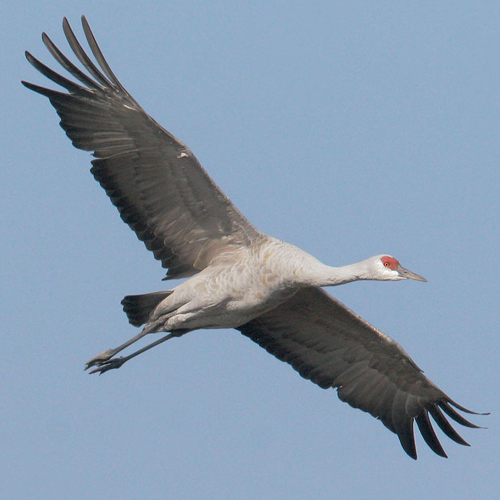General Description
Sandhill Cranes are big birds, with long legs and necks, long pointed beaks, and wingspans which can be over six feet. Adults are gray with red crowns. Juveniles are gray, washed with brown. During the breeding season, the gray plumage of the adults is often stained brown with mud. A "bustle", which covers the short tail, is composed of long, drooping inner wing feathers (tertials and inner secondaries.)
Sandhill Cranes are Uncommon in Western Washington from October-March.Habitat
Sandhill Cranes live in wet meadows and grasslands, and they feed in grain fields and pastures. In Washington, they nest in wetlands in areas that are surrounded by Lodgepole Pine, Ponderosa Pine, Grand Fir, or Douglas Fir forests. Emergent vegetation is a key component of their preferred nesting areas. During migration and in winter they live in more open prairie, agricultural fields, and river valleys. Sandhill Cranes prefer to live in habitats where they have clear views of their surroundings.
Behavior
During the breeding season, Sandhill Cranes paint themselves by preening mud, which serves as camouflage, into their feathers. The courtship rituals of cranes are elaborate: paired birds spread their wings and leap repeatedly into the air while calling. Pairs return to the same nesting territories year after year and sometimes use the same nest repeatedly. The young learn migratory routes from adults; without this modeling, they do not migrate.

No comments:
Post a Comment